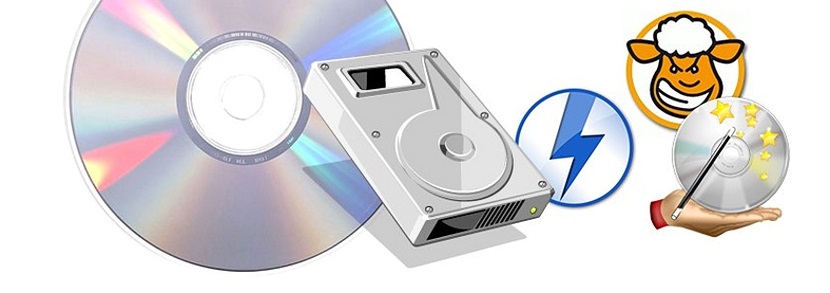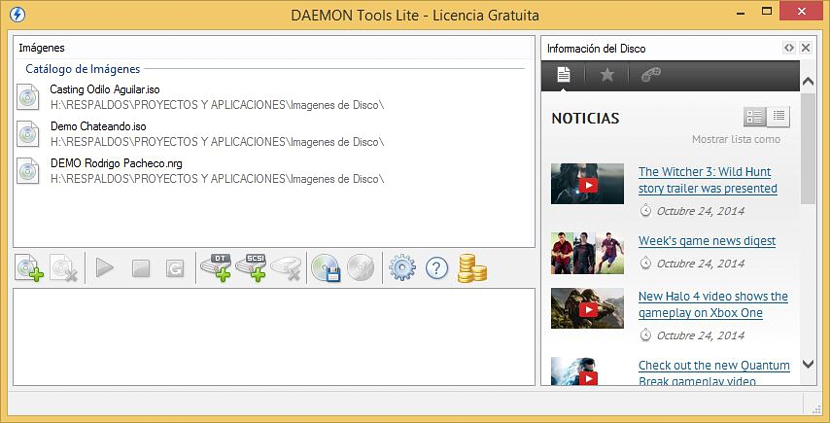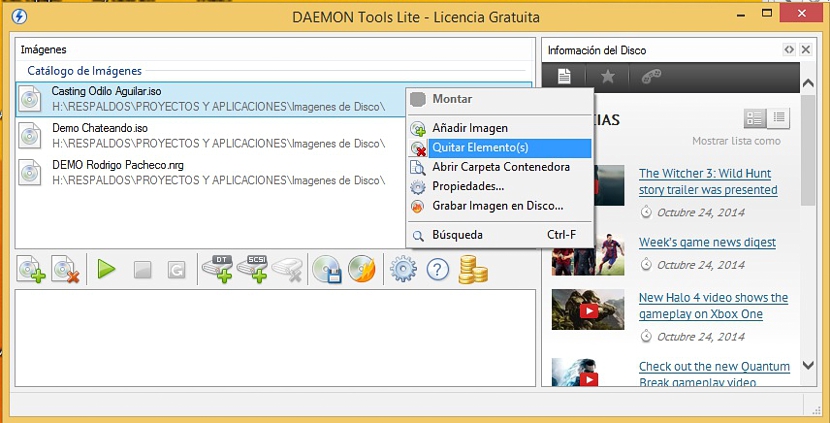
Daemon Tools is one of the most used tools today to be able to mount images of different formats, which does not involve only those ISOs that we have mentioned in different number of articles.
Since Microsoft came to place the function to mount ISO images natively in Windows 8.1, In this version of the operating system we will not need to install Daemon Tools; The situation is completely the opposite if we have a computer with a previous operating system, that is, Windows 7 or Windows XP. That is the reason for this article, that is, to mention what Daemon Tools can offer us in its free version, leaving aside the paid version.
Download, Install, and Run Daemon Tools
To download to Daemon Tools You just have to go to the official website of its developer, where you should pay attention to the link that suggests the "Lite" version (with ads for life) or free (as many suggest). Once you do the respective download and proceed to install this tool, you must be careful in each of the windows that will appear within the entire process.
If you make a mistake and accept all the terms by clicking the button «siguiente«, You are accepting the installation of third-party tools that are included in their installation package. For this reason, when in any of the screens you manage to admire a suggestion of installation of this type of tool, you should only «decline»Your installation. These types of tools usually modify the Internet browser toolbar, which you can uninstall with the procedure that we mentioned on a previous occasion to eliminate this type of intrusive bars.
When you have finished the installation process, it is recommended that reboot to the operating system so that the complementary libraries are registered within the operating system.
Options for working with Daemon Tools on Windows
If you are using Windows 7, possibly Daemon Tools has placed a «Gadget»On the desktop, serving as a small direct access to each of its functions. If you cannot appreciate it anyway, this does not involve any kind of problem as we can call Daemon Tools in the conventional way.
The image that we have placed in the upper part is a small capture where you can admire the interface of this free (Lite) version of Daemon Tools; There are mainly three fields present, these being:
- An area on the upper left where you can add one or more ISO images (or any other format compatible with Daemon Tools).
- An area on the lower left that will show the ISO image that is running.
- A right sidebar that shows us information and news from the Daemon Tools developer.
The first area we actually mentioned comes to act like a little library, where it will be shown as a history, all those ISO images that we have called and mounted with Daemon Tools. In the lower part, however, all those ISO images that we have already mounted and executed will be shown, and it may be one or more depending on the configuration that we have made in this tool.
The area that really interests us at the moment is the one where they will be shown running ISO images; There are a few icons on a toolbar that will allow us to perform different types of tasks, these being:
- Add a new virtual image.
- Delete a virtual disk.
- Play any ISO image found in the history (the top area).
- Stop running the ISO image.
These are the most important functions to mention at the moment; assuming that in the part where the ISO images are executed we have already stopped their activity, they will still be registered in the history (in the upper area).
To remove these ISO images from history we only have to select any of them with the right mouse button. If you are wondering why you should carry out this task, it is simply because when Windows starts, this virtual disk will automatically load, which will be mounted automatically if it has an executable inside.

